A Reporter in Grouse Country: At Massacre Rim, a city councilman and a conservationist hunt an imperiled bird

MASSACRE RIM WILDERNESS STUDY AREA, Nev. — This is the fourth time in an hour the councilman has mentioned Cheetos.
We keep walking forward. A clean brown boot crushes a patch of dry sagebrush, indistinguishable from the last. His feet remain on the ground for a moment before he marches forward, Benelli shotgun clutched in two hands and resting behind his neck, just below a taupe Reno Fly Shop croakie band.
“More Cheetos.” This time we halt and adjust our focus downward toward a fresh pile.
The windy morning gives way to a windy afternoon. In the Massacre Rim Wilderness Study Area near the Oregon border, the Reno city councilman is 300 miles north of his district. The cloudy sky hangs low above a wild high-desert sagebrush sea with no clear terminus.
Porter, the German shorthaired pointer with us, has had enough of the hunt only a few hours in; his soft paws are already swollen. As for Reno Councilman David Bobzien, he is on the lookout for more Cheetos.
In the parlance of this particular hunt for Greater sage-grouse, Cheetos are what the imperiled bird leaves behind. Its droppings bear a resemblance to Cheetos, the result of a winter diet that consists almost entirely of sagebrush leaves. The grouse is a native species to Nevada, and its genes are adapted to survive in the dusty arid land. To live, it needs sagebrush for food and protection. The health of sagebrush habitat is often used as a proxy for the health of the bird, and the population of the bird is often used as a proxy for the health of a sagebrush ecosystem.
And Cheetos are probably just one of the many things you didn’t know about sage-grouse because it is not a well-known animal. It is not the gray wolf, the grizzly bear or the bald eagle. The bird is not a charismatic megafauna ingrained in our collective understanding of what comprises Planet Earth. Most Americans probably don’t even know it exists.
Yet the sage-grouse has emerged as the latest symbol in a fierce decades-long battle over how to balance development with conservation on America’s public lands — or whether to bother balancing those two things at all. That there is a full-court-press effort to address declines in the bird’s population is another thing most people likely do not know about the sage-grouse.
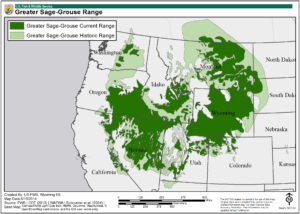
In 2015, Gov. Brian Sandoval and other Western governors entered into a compromise with the Obama administration to prevent it from listing the sage-grouse under the Endangered Species Act. They said a listing could cripple local economies by sidelining development across 11 states and the bird’s 173 million-acre range. As part of the compromise agreement, the states agreed to a voluntary conservation plan with something for everyone to hate. That stopgap measure gave the states five years to improve grouse habitat before the bird is again considered for a listing in 2020.
At 12:51 p.m., a noise — perhaps Bobzien’s last step — flush the first grouse of our hunt. Eight thick birds ascend out of the sagebrush and momentarily shade the sky. Hunching down, the councilman turns to us and signals toward the birds.
He readies his shotgun.
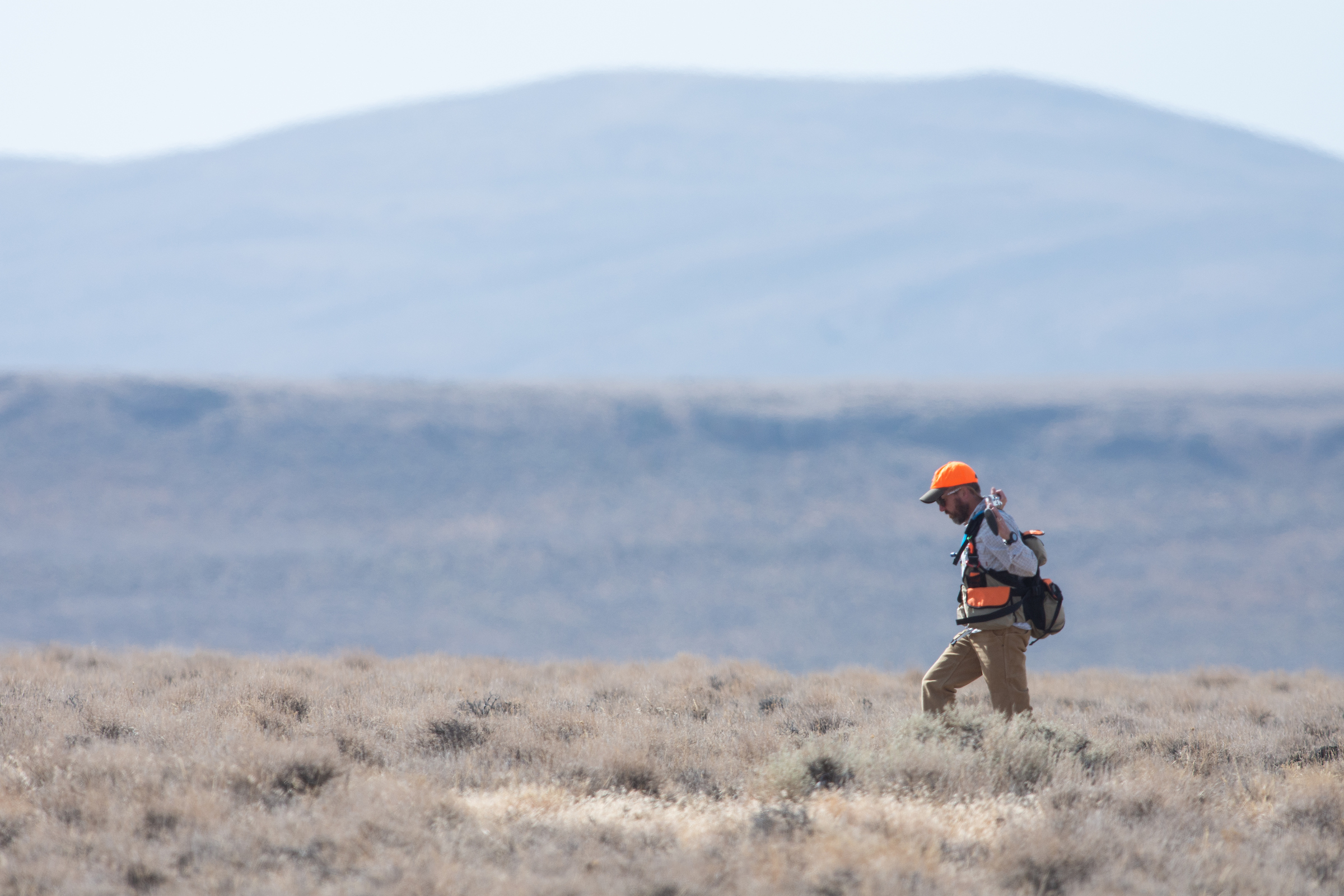
***
At this point in Nevada's long and winding sage-grouse saga, there are more than a few wildlife biologists and hunters — Bobzien included — who would like your correspondent to clear up a few things. Here’s one: Although the sage-grouse occupies a threatened position in a range that straddles 11 Western states from Nevada to Colorado, state-sanctioned hunting is not one of its threats. In the Great Basin region that Nevada occupies, wildfires pose the greatest risk, followed by land development.
The Nevada Department of Wildlife (NDOW) says state officials are conservative about when and for how long you can hunt grouse, with some seasons as short as two days. NDOW enforces a daily possession limit of two birds per hunter and has canceled hunts when conditions on the range have deteriorated. After a devastating wildfire ripped through sage-grouse habitat in July, the department closed off several areas to hunting, the Elko Daily Free Press reported.
“The bigger issue from a sage-grouse standpoint is habitat loss due to wildfire and invasive species, suburban development, energy development, mining activities including exploration, and transmission lines that offer perching and nesting substrate for predatory bird species (e.g. raptors and ravens),” a spokesperson for the department wrote in an email last week.
But even that is somewhat beside the point. The reality is that even for a bird teetering on the margins of an endangered species list, there are places like Massacre Rim where its habitat is doing quite well and the species population is somewhat stable. There are also places — many more of them — where the grouse’s numbers are in a steady decline. Whether the law sees and addresses the difference is a matter of debate.
***
Four of us — Bobzien, Kyle Davis, a long-time conservation lobbyist, Chris Mero, a mapping specialist and friend of Davis, and myself — watch the eight sage-grouse fly out of the brush.
Before the hunt, Bobzien told us he was an Eagle Scout growing up. In his retelling, he was a “slacker eagle.” It’s a claim that is hard to believe. Little about the councilman suggests he is or ever was a slacker. Bobzien hunts in a white checkered button-down shirt and Patagonia pants that seem ironed even on Day 2. While your correspondent forgot to pack two non-essential camping items, Bobzien came prepared with enough supplies to last a week and then some.
Bobzien takes a shot. The “slacker eagle” is far ahead of us, and he is the first to bag a bird.
“Now we’re hunting,” Davis says.
Federal land managers describe the spot where Bobzien clutches the neck of a dead grouse as part of the most high-quality sage-grouse habitat and valuable land in the 101,290 acres of the Massacre Rim Wilderness Study Area. On public lands, the designation known as a “Wilderness Study Area” occupies a space just slightly less controversial than the sage-grouse. The label conveys several land-use restrictions. No off-road vehicles. No drilling. No pipelines.
We pace forward, a slight disturbance atop the desolate and expansive butte. Bobzien mostly stays in front, and sometimes moves the line faster than the other hunters might like.
Mero calls this “The Bobzien Show.”
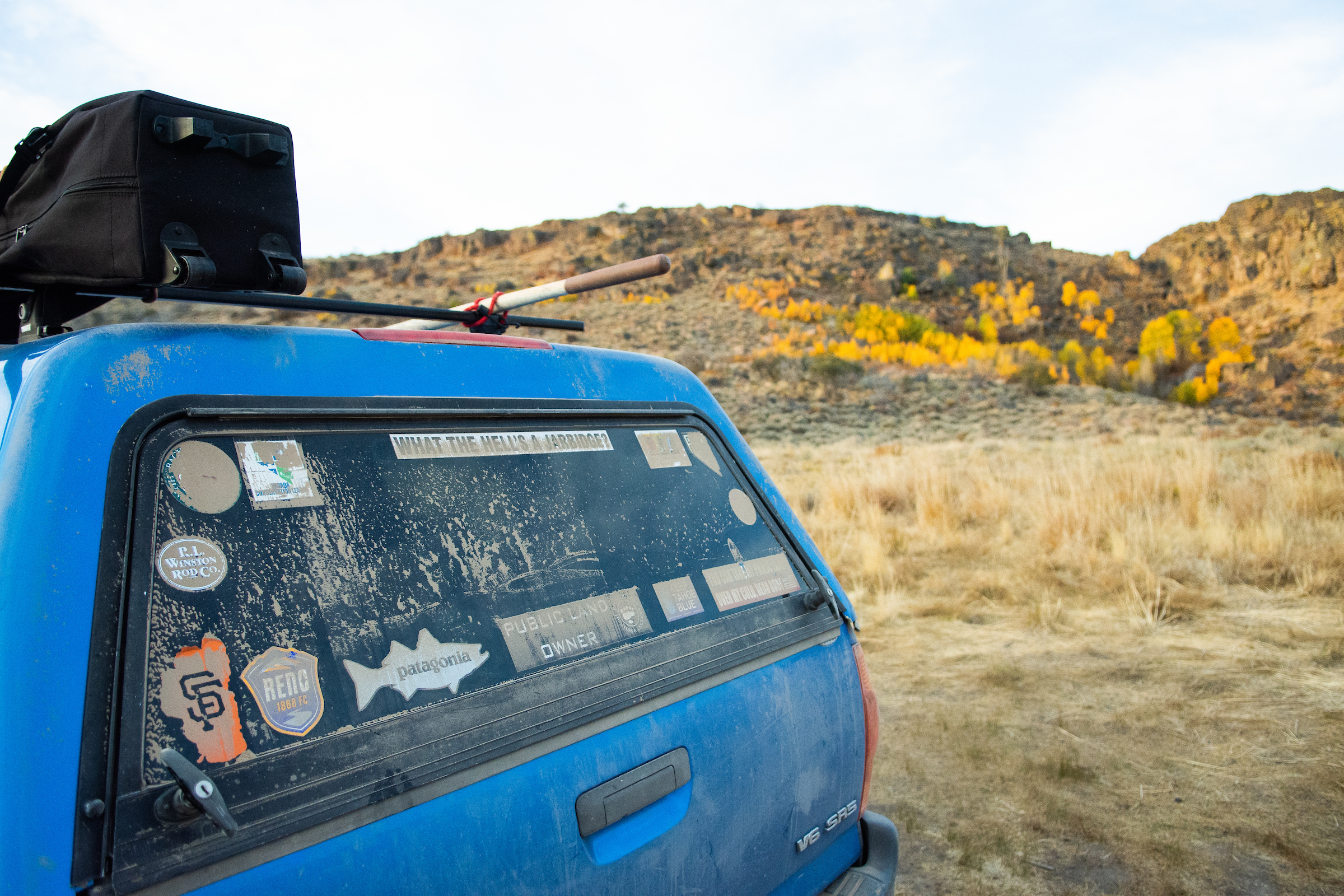
Originally from Virginia, Bobzien came to enjoy the West by way of college summer work in Helena, Montana with the Nature Conservancy and the Montana Wildlife Foundation. “That’s where I picked up fly-fishing,” he says. After his time studying government at George Mason University, he headed west to get a masters degree in public administration at Boise State University. It wasn’t until about 15 years ago that the former state legislator started to hunt.
That puts him on about the same timeline as Davis, a Lovelock native, who is standing by his heavily-stickered 2005 Blue Toyota Tacoma. They indicate that he is a proud PUBLIC LAND OWNER, opposes the Pebble Mine in Alaska, wants to Save Red Rock, represents Nevada Bighorns Unlimited and hates the quads you drive but loves the quads God gave you. This being Nevada, he also wants you to know: Don’t Fence Me In.
Davis, a Democrat (Bobzien tells us later that Davis named his dogs Willy and Hillary), is a key player in Nevada’s small and often bickering-rich conservation world. It is seen as a positive by many — and as a frustration by others — that Davis is not an uncompromising druid who might “worship trees and sacrifice human beings to those trees,” as one developer once described modern environmentalists to naturalist writer John McPhee.
Davis seems to know how he is perceived. In 2013, he riled some environmental groups when, on behalf of the Nevada Conservation League, he testified in opposition to a legislative ban on the bear hunt. Davis says wildlife biologists, not lawmakers, should not be the ones to decide what can or can’t be hunted.
"Banning a hunt by statute is the same as allowing a hunt by statute," he says. "The Nevada Legislature saying we're not going to have a bear hunt because we like bears. I don't like that. And I didn't like it when Congress delisted the wolf by statute. Both of those things should be done by science."
It is with this same philosophy that he articulates how hunting the imperiled grouse helps conservation efforts instead of undermining them.
“The short answer is that most likely, given the state of the habitat [here] and everything like that, if we didn’t have a hunt on sage-grouse, the population would be the same no matter what,” Davis says. “And that’s the whole concept of ‘compensatory mortality.’ Essentially the birds we shot — four birds were going to die this winter anyway. They just died by us shooting them rather than lack of [space within the] habitat, or carrying capacity.”
“Or a coyote,” Bobzien adds.
Davis replies: “Or a raven.”
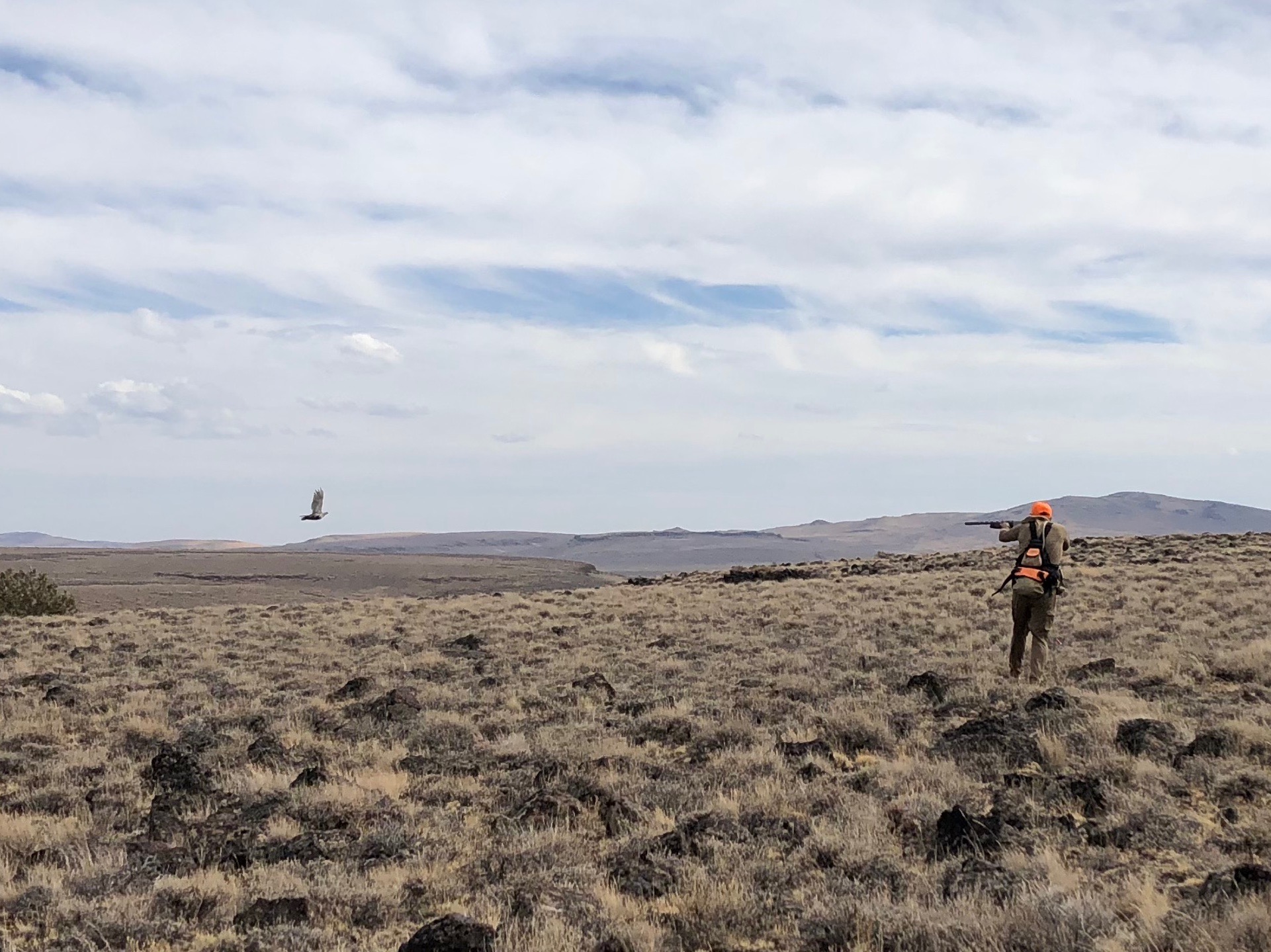
Bobzien and Davis have bagged four grouse between them, the limit for the day. The early-afternoon wind gives way to mid-afternoon heat. We are dog-tired but not exactly sure why; the sage-grouse hunt is a pedestrian hike on mostly flat terrain. Davis digs inside his camper shell to find the cooler, and we crack open a few cold IPAs. I wonder whether I am unpleasant to have around. Is it pleasant to talk about sage-grouse over beer? This, you should know, is not the first time this sage-grouse correspondent has had to reckon with that question this year, or even this week.
“In terms of why do you keep doing it? First of all,” Davis says, “because that’s the fundamental concept of the way we manage wildlife. If you have a huntable population, you allow for a hunt.”
There are three reasons why, he says. “One, it brings in revenue to the department. Us buying hunting licenses and going out shooting sage-grouse brings revenue to the department and that money gets spent on the ground on habitat improvement projects and other things like that.”
Number two. “The science you get off of it. The wings we’re going to deposit in those barrels, the biologists at the Department of Wildlife get a ton of information off of those wings.” (As part of a conservation project, NDOW asks hunters to leave a wing from each sage-grouse they hunt in a barrel. The wings help wildlife biologists determine sex and age data.)
And the third. “By maintaining the sage-grouse as a game species, you are able to spend game species money on it… By maintaining sage-grouse as a game species, it maintains that we can spend Pittman-Robertson money [an excise tax on firearm sales] on habitat work, monitoring, science and various other things for sage-grouse. If we didn’t have any kind of a sage-grouse hunt, there wouldn’t really be a justification to spend game species money on this.”
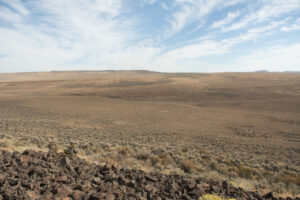
Agree or disagree with the councilman and the lobbyist, they see the complexities here.
They also know that the very existence of the grouse hunt continually re-emerges as an issue. Recently, NDOW even felt the need to publish a flyer entitled “In Defense of Sage-Grouse Hunting in Nevada.” Since 2004, NDOW reports that the hunt accounts for about 2 to 6 percent of the state's annual fall population. According to data collected since 1996, it has drawn an average of 2,371 hunters, far fewer than come out to hunt other birds like chukar.
Not all hunters are on board, though. A few days before we headed out to Massacre Rim, Brian Rutledge, an Audubon Society vice president who opposes allowing the hunting of grouse, said he wanted me to make it clear to readers that he is not against hunting. “I am a bird-dog using hunter,” he says. “I grew up hunting.” Yet it’s hard for Rutledge, who has been involved in the multi-state grouse conservation efforts since the mid-2000s, to wrap his head around shooting a bird he has worked so hard to save. Rutledge wants to make another thing clear: He trusts NDOW Director Tony Wasley’s judgment that the state would not allow the hunt if it was detrimental.
But it's something he can’t quite square.
“It is very difficult to explain to people that we’re trying to save a species and then we’re going to go out and shoot them,” he says. “It’s bloody hard to explain to the average citizen.”
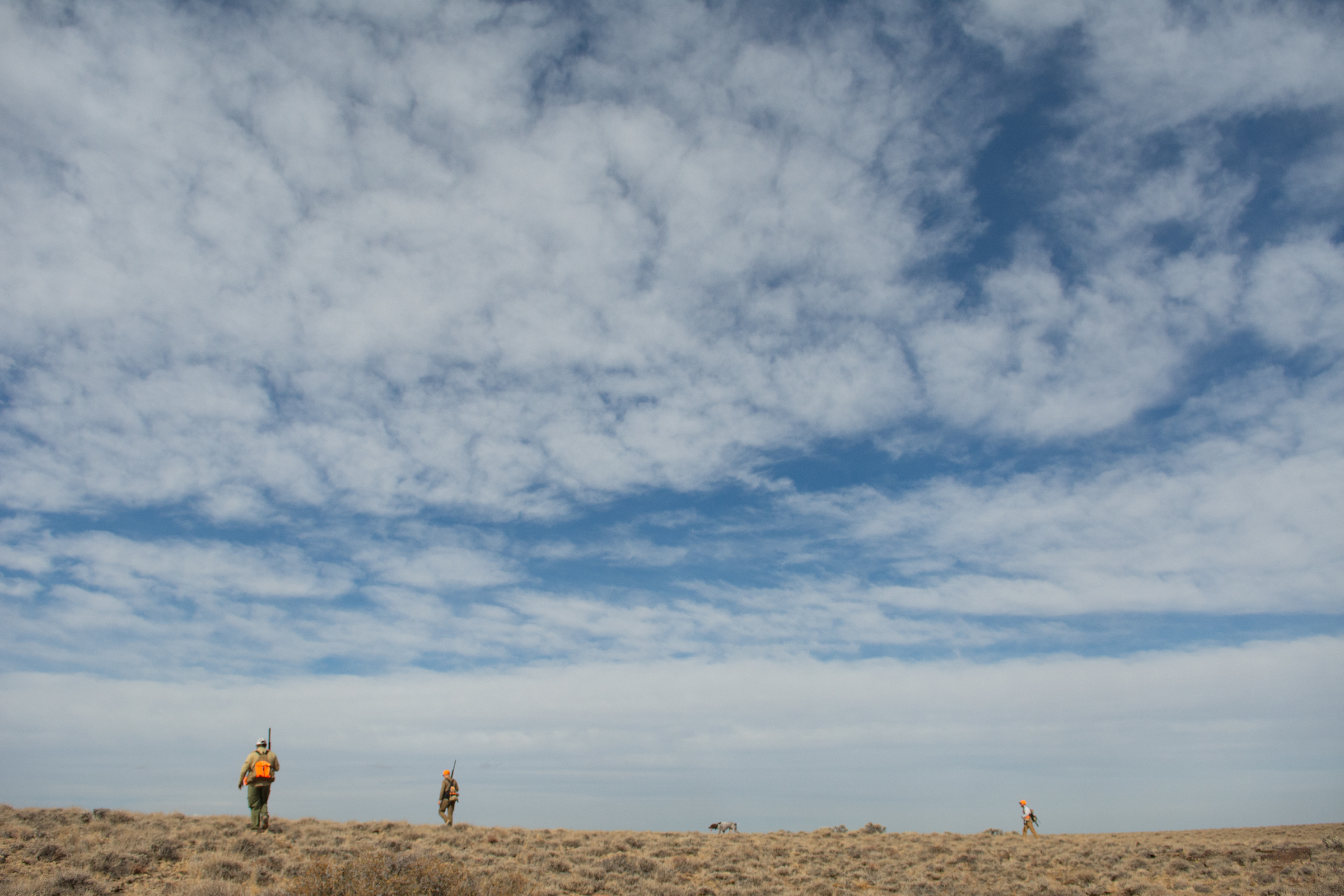
Massacre Rim sits next to the Sheldon National Wildlife Refuge. The Sheldon, as Bobzien calls it, came into existence during the Great Depression when President Herbert Hoover signed an executive order to protect the remote land in Nevada and Lake County, Oregon. And it was, in a few short years, folded into President Franklin D. Roosevelt’s Works Progress Administration as a site for environmental projects. Among the camp areas that Roosevelt’s Civilian Conservation Corps built was Badger Creek, and it’s around Badger that we camped. It’s where Bobzien is now cleaning his grouse for our stew as Davis makes an incision into the sage-grouse’s crop.
“There’s the crop,” Davis says, pointing to the plump purple sac. “Everything goes into here and sits in there for awhile and then goes down to get digested. So if you pull open the crop here…”
As he breaks the bulging crop along the small slit he made with his knife, the chamber loses its structure and the largely a cluster of sagebrush leaves slide out and trickle off Davis’s fingers.
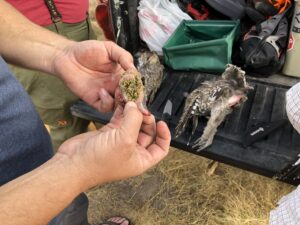
“Let’s see,” Davis says. “They’re just eating sagebrush. Fresh, green sagebrush.”
We then move off-topic to trade restaurant recommendations in Winnemucca, talk about Davis’s truck (he bought it during the last legislative session), and someone asks where the growler is.
There is more than a little meat on the grouse; one bird can grow to about two-feet in length and weigh up to six pounds. It is often compared to a chicken. Bobzien and Davis say they were irked when a press release from Sen. Dean Heller's office referred to it as a “flightless, chicken-like bird.” The grouse flies and can reach speeds of up to 50 miles per hour. Their most notable characteristic is their flamboyant mating ritual. Male grouse rapidly inflate and deflate yellow-air sacs on their breasts, sending out a continuous wave of suction-release pops, all in an attempt to attract their female partners on a shared mating ground known as a “lek.” The term for this tango is “lekking.”
Conservation efforts, including the plans approved in 2015 to avoid an Endangered Species Act listing, often place a high priority on leks. The sage-grouse are fickle — they only procreate under the right conditions. Some conservation rules aim to create buffers between land development and the leks, as well as near the areas where grouse nest, and to limit noise to only 10 decibels above ambient noise, equivalent to a whisper in a quiet library. The plans also include measures to limit oil and gas development in high-quality sagebrush areas and requirements that drilling not fragment sagebrush habitat. Other rules put restrictions on where cattle can graze and how grass has to be maintained.
No one is fully pleased with these restrictions, meant to avoid even more onerous rules under an Endangered Species Act listing. Industry groups argue that some rules are unnecessary and ineffective ways to deal with the issue; environmentalists argue that they don’t go far enough.
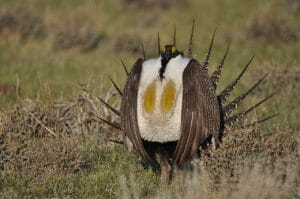
And some worry about an effort underfoot to weaken the plans or change course with others asking: Is voluntary conservation worth it? Many are asking the same question they asked in 2015: What is the right balance between development and conservation? What is overreach?
The morning before the hunt, I have an unrelated phone interview scheduled with Rep. Mark Amodei, whose district includes Massacre Rim and stretches to the other side of the Great Basin. I ask him what he thought of the 2015 plan. The congressman is not a big fan.
The degradation of sagebrush habitat is a real and pressing issue for the Great Basin, he admits. “I accept that, Daniel,” he says. Where Amodei, a free-wheeling Republican known for his candor, takes issue with the conservation plan was the decision to potentially halt new mining claims on millions of acres.
“Here’s what they did,” he says. “They took a crayon… and they just drew this blob.”
The sage-grouse in Amodei's district are deep in the political thicket. In 2014, he pushed legislation in Congress that exempted the sage-grouse from an Endangered Species Act listing, but it did not deter the Obama administration from acting.
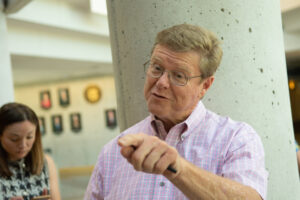
Heller took up the charge again this year, supporting a rider on the Pentagon spending bill to prevent the species from being listed for at least 10 years. The rider ultimately did not pass and even the Pentagon publicly opposed the effort, with a spokesperson saying it “misleadingly implies that the [Department of Defense] has had or may have difficulty managing for these species without degrading military testing or training.”
As with other conservationists and sportsmen at the time, Bobzien and Davis — both on the Nevada board of Backcountry Hunters and Anglers — slam that approach. To exempt the species would remove one of the biggest incentives to collaboratively manage grouse habitat.
“Whether we like it or not, the reality is without the threat of a possible listing, this [conservation] work doesn’t happen,” Bobzien says. “They don’t come to the table. They don’t try to work things out, compare notes, see where they can work together on specific projects. If you short-circuit it, any impetus to improve the habitat and conditions on the ground goes out the window.”
Although an exemption is alluring to industry, even some trade groups say a legislative approach could ultimately bring less certainty. Even if a listing is deferred by Congress for 10 years, nothing says it can’t be listed in the future when the habitat is more degraded. And if the habitat is more degraded, the penalty of a listing will potentially be even more harmful.
Ethan Lane, executive director of the Public Lands Council and the National Cattlemen's Beef Association, says his group hasn’t actively lobbied Congress to exempt the grouse from listing.
The group, instead, is supporting amendments that the current administration has offered. He says the original plans wrongly curtailed grazing when their focus in Nevada should have been on fire; he cites two large fires this season that destroyed about one million acres of habitat.
“The threat in those areas isn’t the grazing,” he argues. “The threat to those areas is wildfire.”
Ranchers, he stresses, are a key part of the sage-grouse solution. In most states, ranchers and private landowners sit on parcels that are close to water sources, key habitat for maintaining healthy Greater sage-grouse populations.
Over the past year, Interior Secretary Ryan Zinke has loosened some provisions in the 2015 plan, eliminating the proposed 10-million acre mineral withdrawal. The Bureau of Land Management (BLM) and the Forest Service, which manage more than 65 percent of Nevada’s land, have released proposed amendments to the plan that would claw back some of the rules.
The most recent amendment from the Forest Service was released on Thursday and it was immediately slammed by environmental groups and sportsmen groups as diluting the plans and removing key protections.
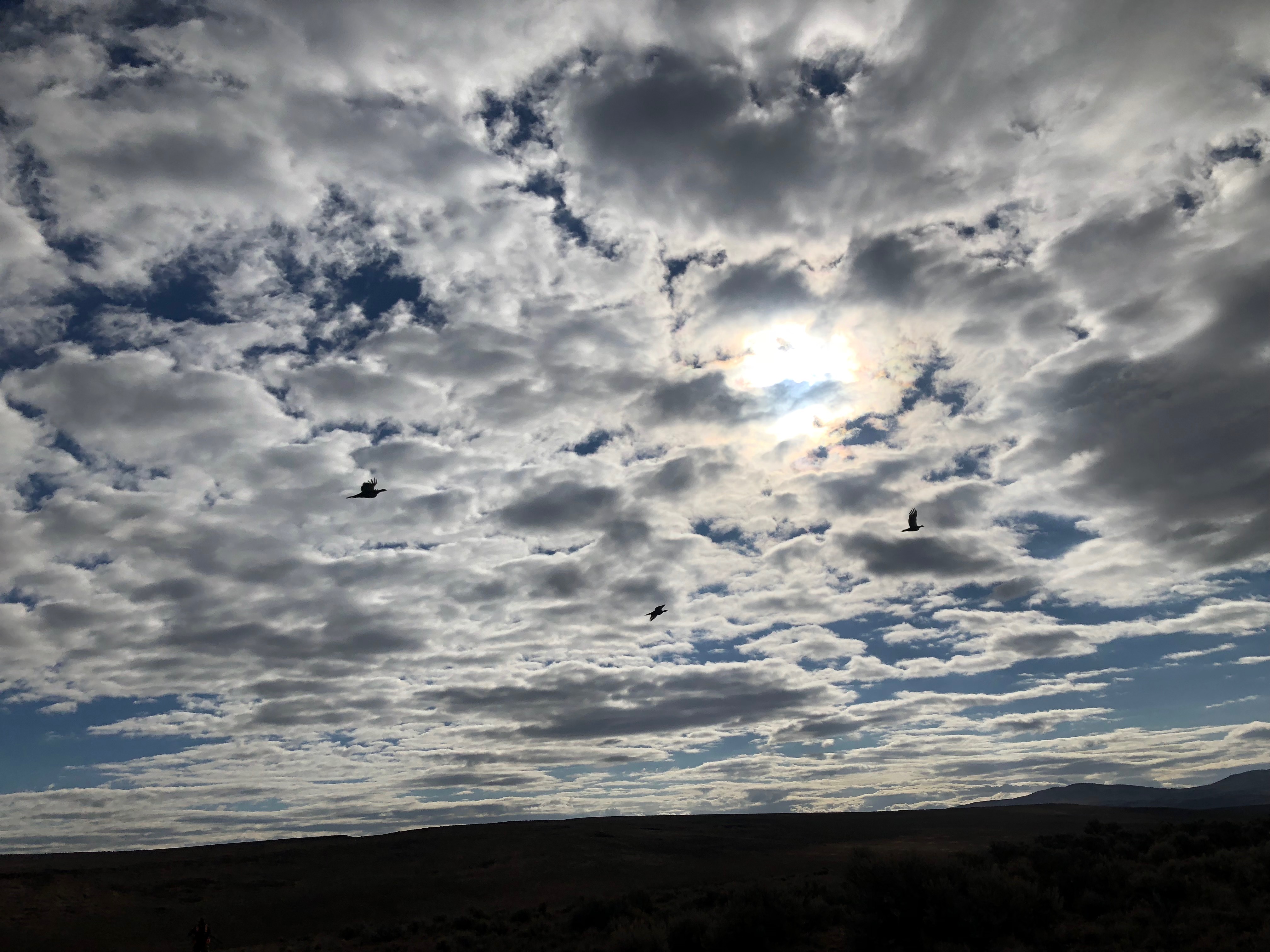
Taken together, Rutledge worries that the changes are a shift away from the voluntary conservation efforts of 2015 and all but guarantees a listing come 2020.
“We did not list the bird based on a decision that there was enough regulatory certainty to see that they were protected,” he says. “And this administration has been very adequately removing almost all regulatory certainty. So what do we hang our hats on for not listing the bird.”
The Sandoval Administration supports some of the Trump Administration's amendments. But the Republican governor continues to stand by the concept of the 2015 plans, and he has expressed frustration over some of the changes.
Last month, after a Western Governors Association meeting in Lake Tahoe, Sandoval said he was concerned with a recent order by the administration to no longer require mining and energy developers to offset their impact on federal land by improving land elsewhere on the range. The program, known as “compensatory mitigation” is a central part of Nevada’s state plan.
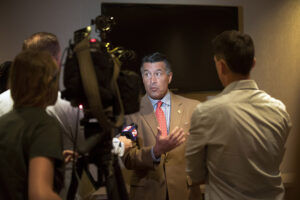
“We’re able to demonstrate that [the program] is working,” he said. “Don’t take something away that is working. And it took a long time to negotiate that with the mining industry and now the mining industry is a full partner in that regard. That was the point. To preserve the bird, to preserve the landscape and allow a very important industry in our state to continue.”
***
The sun is going down over the Sheldon. From the steep hill that abuts our campground, thick orange streaks stream into the sky. There is garlic bread cooking on a grill that has often been toted to the Black Rock Desert Playa for Burning Man, Bobzien tells us. We are soon in front of a pot of sage-grouse stew, and it empties quickly. Maybe it is the cold night or maybe Davis just makes a mean stew. I don’t ask about the grouse at dinner. They’ve had enough.
“Tastes like Nevada,” Bobzien repeats again and again. “Tastes like Nevada.”
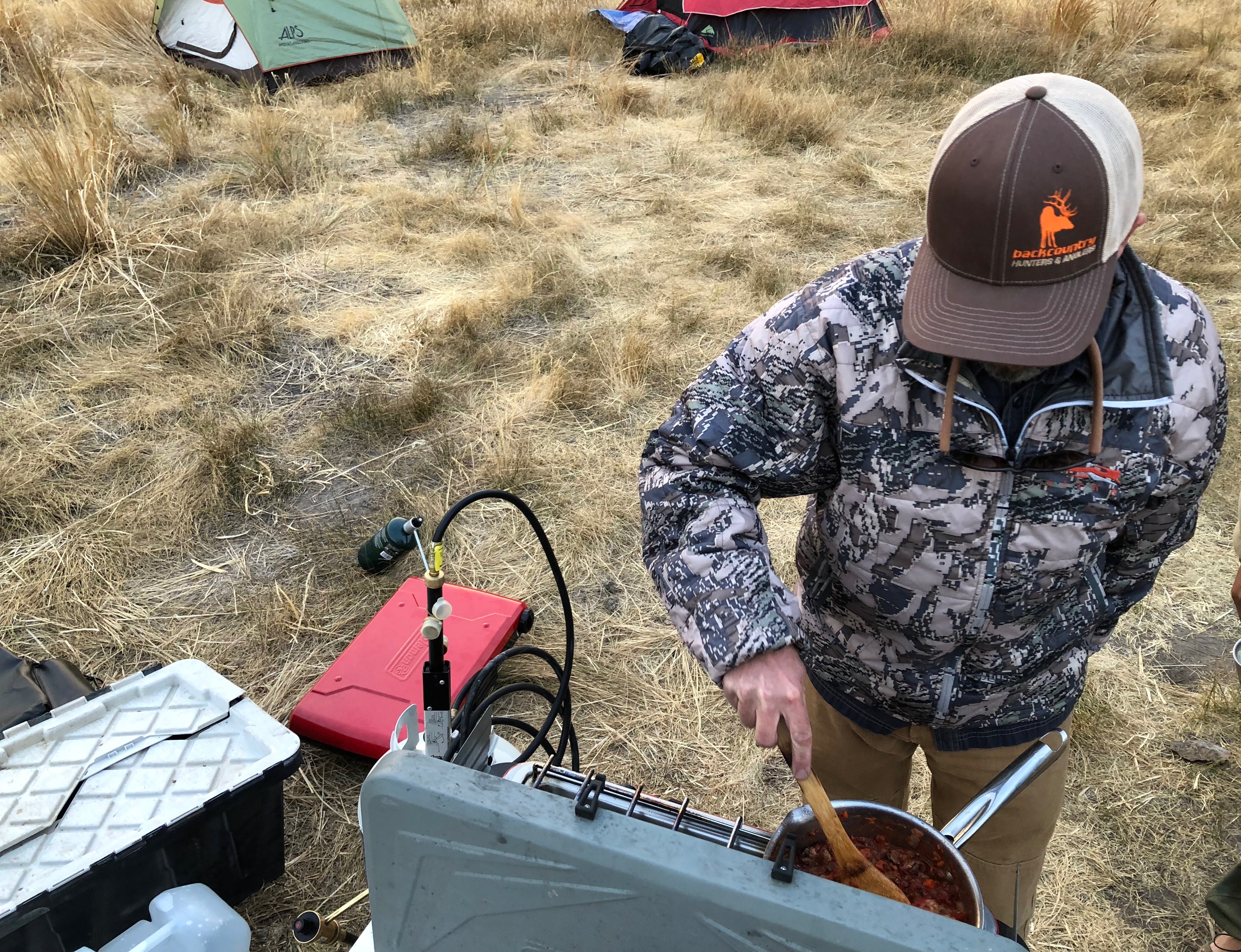
There are some grouse you cannot hunt.
Neither Nevada nor California allow a hunt for the bi-state sage-grouse, a group of birds that straddles the state’s western border near the eastern Sierra. A federal judge concluded earlier this year that the U.S. Fish and Wildlife Service erred when it denied the bird, a segregated subpopulation of the Greater sage-grouse, protection under the Endangered Species Act.
You are also not allowed to hunt the Gunnison sage-grouse, a distinct species of grouse that roams in southwest Colorado and parts of eastern Utah. The Gunnison, listed as threatened in a 2014 decision criticized by most Colorado politicians, offers a window into a grouse listing.
Like the isolated bi-state grouse, the Gunnison grouse’s range is magnitudes smaller than the 11-state range of the Greater sage-grouse. Yet there are similarities in how the federal government has dealt with the two species. Before the Gunnison sage-grouse was listed, landowners in its range pursued exhaustive voluntary conservation measures. John Swartout, a policy adviser for Colorado Gov. John Hickenlooper said that 98 percent of private land in the bird’s main range — the Gunnison Basin — is protected with tools like conservation easements.
The conservation measures, meant to avoid a listing, stabilized the bird’s population in the main Gunnison Basin. But satellite populations continued to dwindle. And the Endangered Species Act does not discriminate. Its goal is to protect a species on a broad scale. A listing applies to every stretch of habitat, good or bad, and eventually a listing came for the Gunnison grouse.
"It’s frustrating for people, but that's the nature in dealing with the Endangered Species Act," Swartout said, noting that the governor’s office and local governments sued over the designation.
I wanted to talk to Swartout to see what lessons the experience with the Gunnison grouse might apply to plans for the Greater sage-grouse. Does it make sense to ask people to agree to voluntary regulations — all in an effort to avoid a listing — if the federal government might list the species anyway?
Swartout was emphatic that yes — listing or not — there is value in the voluntary conservation work. If landowners are already involved in conservation, it minimizes the impact of a listing.
“The reality is these agreements hold up, and our landowners are protected,” Swartout said. “They still have certainty. They don’t like the fact that it’s listed but they still have certainty.”
He said everyone needs to take the long view and strike a balance. He quotes Tolkien's Lord of the Rings. “Shortcuts,” he says, “make for long delays.”
The morning before our hunt, a judge tossed out Colorado’s lawsuit challenging the listing.
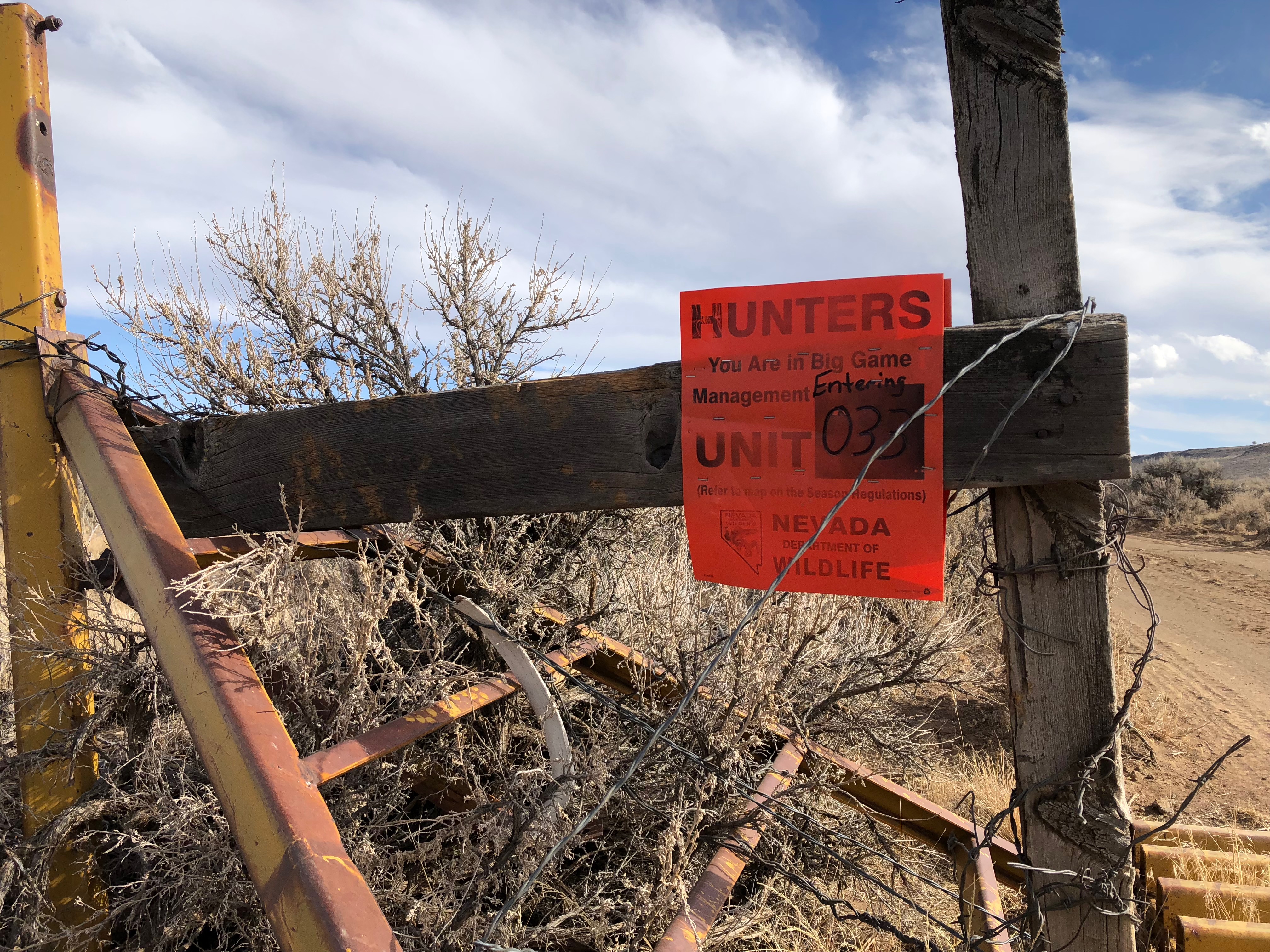
Litigation is behind most of these kinds of listings.
The Center for Biological Diversity is an important factor in that equation. The group of ardent environmentalists, to whom the term “druids” could perhaps more accurately apply, has been a driving force in challenging the federal government on the Endangered Species Act — and pushing for the act to protect all of the grouse: the bi-state, the Greater sage-grouse and the Gunnison.
“It sticks in the craw of a lot of people,” says Patrick Donnelly, the center’s Nevada director.
Donnelly does not hold back. “With the Greater sage-grouse, it is going extinct before our very eyes.” His organization sued over the 2015 plan. Donnelly doesn’t think it will work. On this, the purist environmentalist has more in common with the zealous industry lobbyist than either of them could imagine. They are both uncompromising, albeit for diametrically different reasons.
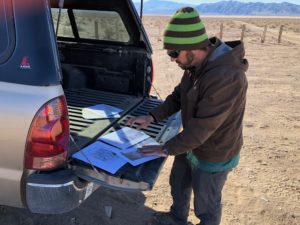
“We’re dealing with issues with the sage-grouse that might be beyond those which could be feasibly resolved through well-intentioned conservation measures,” he says, rattling off threats to the bird like wildfire, invasive species and drought. “Frankly, I don’t think those conservation measures are going to make a difference anymore. I think the bird is heading for a listing no matter what we do. It should have been listed at that last point in 2015. It’s a crisis.”
A few minutes into a phone conversation, Donnelly stops for a second. He concedes that there was one positive to come out of the 2015 plans: a recognition that bolstering sage-grouse coveys often has more to do with habitat restoration than it has to do with a sole focus on population.
Helping the Greater sage-grouse helps all animals that rely on sagebrush habitat, he notes, something the state has come to recognize. In 2012, Sandoval created a Sagebrush Ecosystem Council to tackle the sage-grouse issue (not a Sage Grouse Ecosystem Council).
“Where the grouse thrives, the Great Basin is generally a thriving ecosystem,” he says.
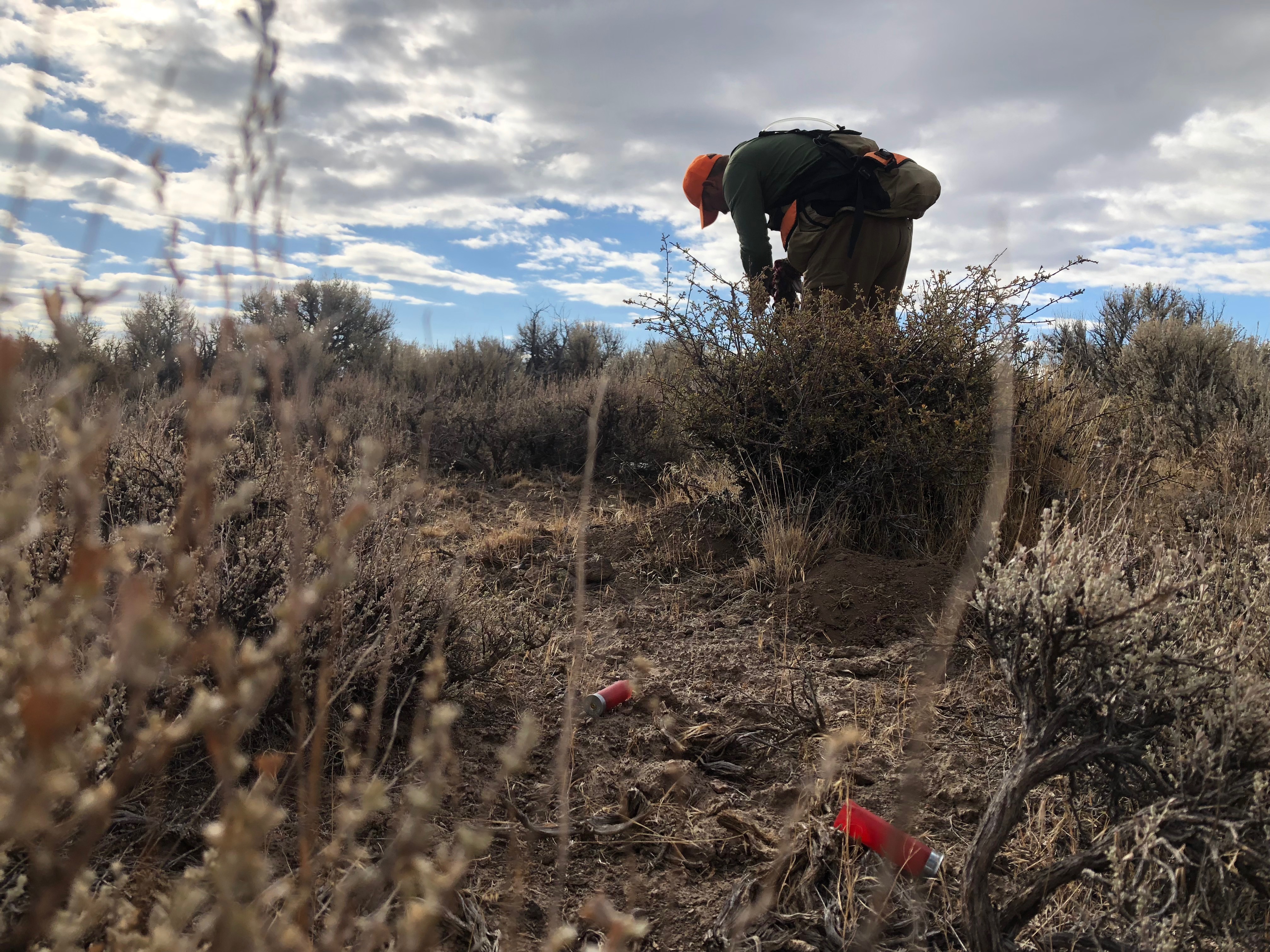
***
The councilman’s first hunt was for chukar near Battle Mountain (he thinks, or maybe it was near Winnemucca). Since then Bobzien has gone hunting with a number of fellow legislators and other politicians. He tells us in the truck, on the way out one morning, that he once went on a hunt near Yerington with Lt. Gov. Mark Hutchison and state Sen. Scott Hammond.
“They were making jokes that if we’re not careful, this will end up as a three-part series in the Reno-Gazette Journal,” he quips as he points out Blowout Mountain ahead.
“[Hunting] gives you a different way to be out on the land and enjoy nature and really be a part of it in a very different way than just going for a backpack trip or just camping,” he says, wearing a Backcountry Hunters and Anglers cap. “When you are the predator — not to get too corny about it — you have to move, you have to interact, you have to exist on the land in a very different way.”
Backcountry Hunters and Anglers occupies a difficult space in the Age of Trump. John Gale, the group’s conservation director, stresses the organization’s commitment to maintaining federal public land. Gale and his colleagues have pushed back hard against land policies from the Trump administration that they see as tilted in favor of industry, at the expense of wildlife.
For that, the group has been called a "green decoy" and not reflective of the broader hunting community. Gale rejects these claims. According to the organization’s magazine, its members identified themselves in a survey: 33 percent independent, 32 percent Republican and 20 percent Democrat. Their interest is sustaining wildlife to conserve the tradition of hunting.
“We have to be strong for the sage-grouse,” he says. “They can’t be in D.C. for themselves.”
Bobzien emphasizes the strong connection between conservation and hunting. As for his view on the 2015 plans, he supports the Obama-era rules and wants them to succeed.
“Look, the medicine might sometimes taste bad going down,” Bobzien says. “But it’s a whole heck of a lot better than the sickness itself. Quite frankly, under a listing we can be quite sure that those impacts some interests are feeling would be far more pronounced.”
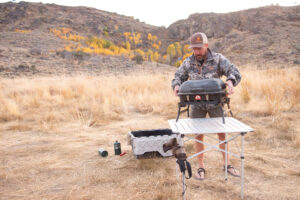
We are about to leave the campsite Sunday morning when Bobzien yells “MOOP!” This is an acronym Burners use for “Matter Out of Place,” known by most people as trash. Bobzien turns to Davis and says, “Guys, we need to MOOP this place.” Bobzien finds a single bottle cap and jokingly chastises Davis for having been about to leave the Sheldon — a wild place, one of the healthiest sagebrush steppes in the grouse’s range — without checking for MOOP.
When we drive out of the Sheldon and pass by Massacre Rim, we are in one of the most rural and northern corners of Washoe County. For months, the county has been working on a controversial public lands bill to remove the Wilderness Study Area designation from the area.
The proposal, following an old BLM recommendation, would release 78,825 acres of the area, opening it up to potential development (there is already a Kinder Morgan pipeline just outside of Massacre Rim). The rest of Massacre Rim — 22,465 acres — would be protected wilderness.
“See that stripe?” Bobzien asks. “That’s the pipeline.”
I ask: “It’s underground?”
He replies: “But that scar will be there for one hundred years.”
Kinder Morgan’s project, the Ruby Pipeline, disturbed Greater sage-grouse habitat, and wilderness advocates worry that reclassifying Massacre Rim under a less robust federal land designation will open up some of the nation’s highest-quality habitat to similar threats.
“If it doesn’t have that protected status, then you could do things like put a giant gas pipeline through it,” Davis says. “The Ruby Pipeline went just south of the Massacre Rim [land].”
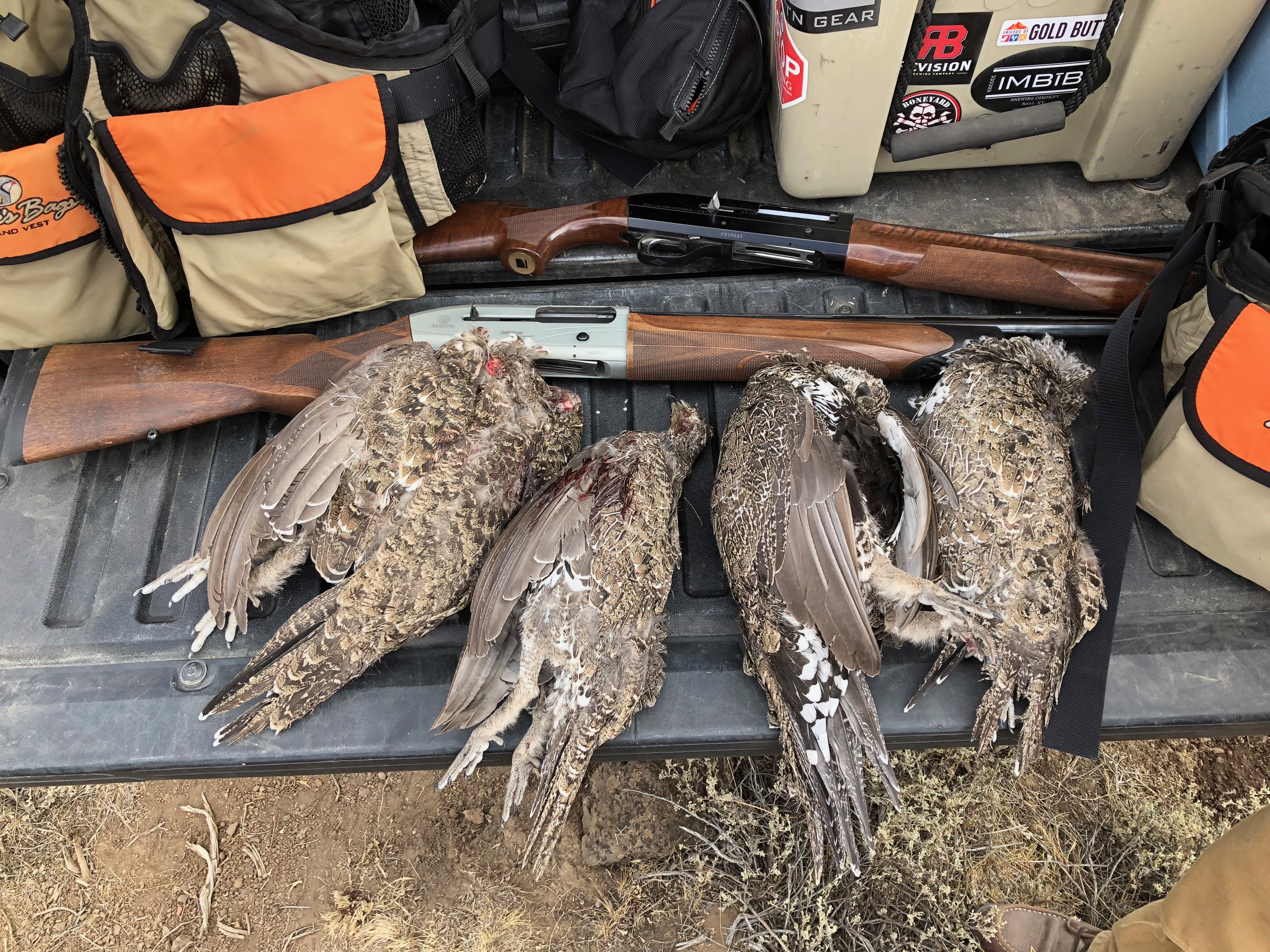
I ask Bobzien a final question: Why hunt sage-grouse?
“Chukar is a hell of a lot of fun,” Bobzien says. “And we have good times with chukar, and it’s amazing to see how they persist in this landscape. But there’s something about a hunt where the prey species is so obviously the result of thousands of years of evolution. Again, it’s that transcendent quality. When you are engaging in the sport of hunting, you are already pretty deep in because you are taking the life of a being. But you sort of see yourself as part of a long, long, long, long tradition.”
Or, as he told me earlier, “I see it as a quintessential Nevada pursuit.”
Northern Washoe is so remote that there are few paved roads between Massacre Rim and Reno. To get back home, Davis drives through California. Between Cedarville, California and Alturas, we stop at an agricultural checkpoint. A cheerful inspection agent directs us to stop, and Davis puts down his truck window. With a smile, she asks if we have any agriculture or livestock to declare, and we say we have just come from hunting sage-grouse at Massacre Rim.
“Sage what?” she asks.
“Sage-grouse,” Davis replies.
“Sage grass?” she asks.
“No, sage-grouse,” Davis replies.
“I’ve never heard of that,” she says. And we go on our way.
